Nine artists came together to create an exhibition in Boulder that threw rules and traditional values of viewing art out the window. Curator Jessica Kooiman Parker of the Dairy Arts Center invited these artists to break the traditional barriers put between the art and the viewer — allowing people to experience art in a different way. There’s usually one rule when it comes to art — enjoy it but don’t touch it. We’re supposed to experience art in a certain way — stand back and enjoy from afar since artists put hours of work into their pieces and it’s meant to stay pristine. But in Touch — on view until Sunday, March 3 — you can put your hands on or interact with all installations in some manner.
Touch breaks the mold of a typical art experience by giving viewers permission to do the unthinkable in an art gallery. You can handle, rip or scratch the art and some pieces are interactive as well. The nine artists featured at Touch are Kenzie Sitterud, Elizabeth Morisette, Chelsea Gilmore, Thomas Scharfenberg, Mark Bueno, Sean Patrick Faling, Julie Maren, Clay Hawkley and Angie Eng.
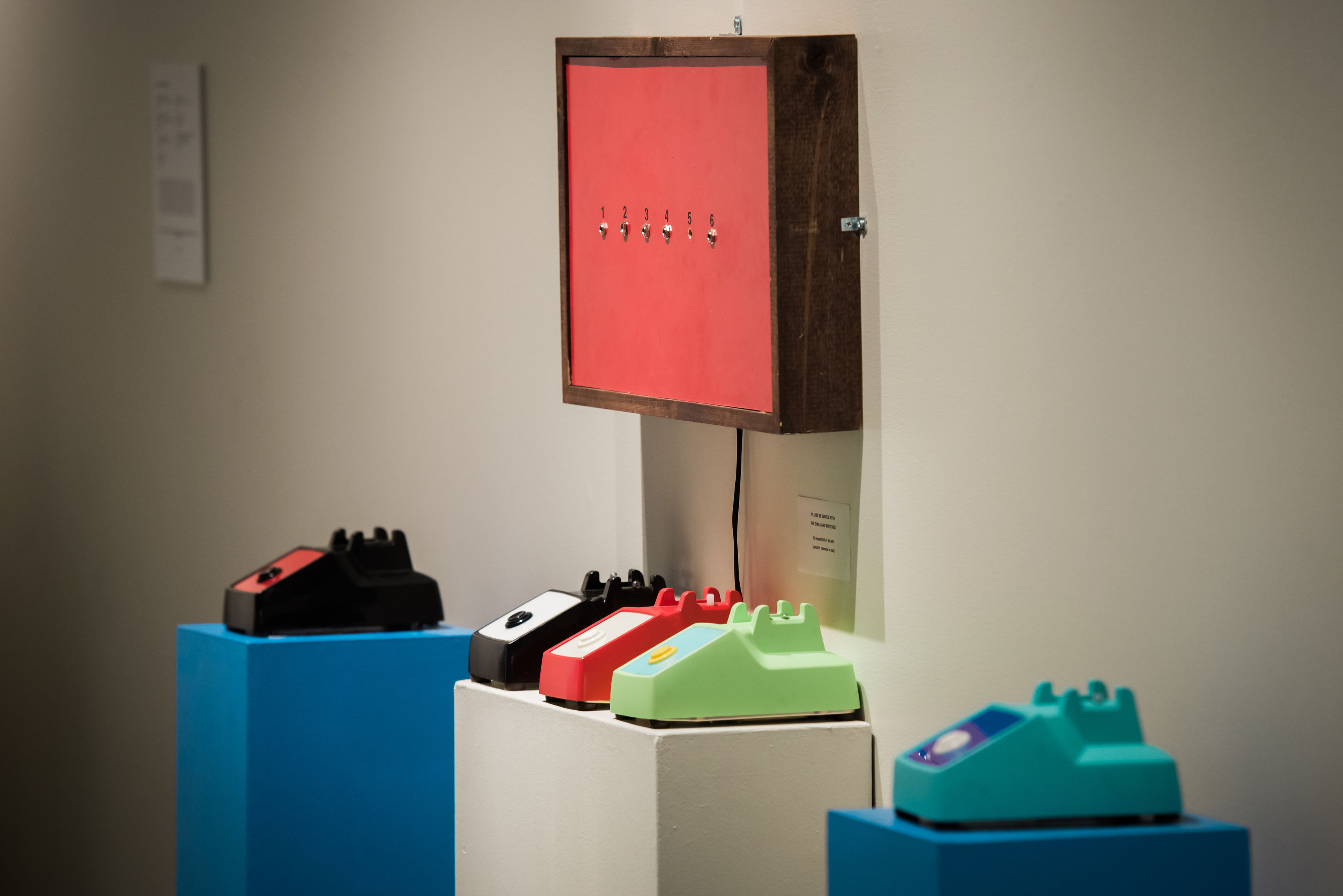
Chelsea Gilmore believes there is a disconnect between people and the planet that support us, so her artwork is a commentary to the waste that humans produce. She utilizes a variety of industrial and mass-produced materials, such as coffee filters, PVC pipes and plastic sheeting, instead of paints and canvases to showcase her artwork — moving away from the normal tropes of fine art. Gilmore also tries to find beauty in industrial waste since there’s nearly an endless amount of it — finding positivity amidst the negativity. Her installation for Touch is simply made out of plastic sheeting and staples that are slung from the walls and ceiling. You begin to realize how much waste humans produce as you walk along her installation and feel the plastic sheetings — questioning what our world will look like if it becomes a plastic wasteland and if we would be able to find beauty in it.
Elizabeth Morisette is somewhat similar to Gilmore because she uses recycled or repurposed material to create her artwork. She prefers to use common materials with history, meaning items that are or were once prevalent to all of us throughout our life. When touching Morisette’s China Basket series installation, you begin to notice small toys intertwined with zip ties — each toy invoking different memories for each individual that comes into contact with it. She also gives her artwork catchy, nostalgic names to fuel the memories we have of those specific items. Her Moneyball piece is made out of paper lanterns and toy money, which can conjure up a memory in our childhood when we played with toy cash registers. Touching her artwork allows us to remember a time, place or person we once knew.

Clay Hawkley’s installation at Touch features four distressed posters which viewers can crumple, fold, rip — anything to add their own touch on it. They are replicas of famous paintings — the Mona Lisa, Frida Kahlo’s self-portrait, Head of a Skeleton with a Burning Cigarette by Vincent van Gogh and the Great Wave of Kanagawa by Hokusai. Art sometimes loses meaning through time and through exposure, which perhaps led Hawkley to play around with the idea of physically distressing replicas of famous works of art to shift viewers perspectives on art itself. His Charcoal Touch installation is a piece of paper covered in charcoal, so the viewer is automatically drawn to it and wants to make some sort of contact with it. This installation quite literally leaves an impression on viewers — an impression they then want to wipe off their hand. That resulted in another piece on the wall surrounding Charcoal Touch — a myriad of charcoal handprints with some words in the mix which creates an eerie, shadowed image.
Mark Bueno’s 17 pieces for the exhibit work like lottery scratchers — except you scratch away to reveal his artwork, winning an experience rather than money. Two lucky people were considered winners of something more than an experience, with two of the 17 scratch-off artworks containing a “winning” number that awarded a cash prize (plus, ownership of the piece). The first number was in a group of seven paintings designated for serious art collectors who had to purchase the piece before scratching off (or not scratching off — their decision), whereas the other number remained available for anyone visiting the show to scratch off. All surfaces are now scratched off (since the end of the exhibit is on Sunday, March 3), but his installation calls into question the rule of touching art — are we better off leaving it in pristine condition or does choice compel us to scratch it off to reveal the original painting? These paintings are also the first in his collection of a series titled WIN/WIN — alluding to the idea that it’s a win/win situation whether or not you decide to scratch off the surface.
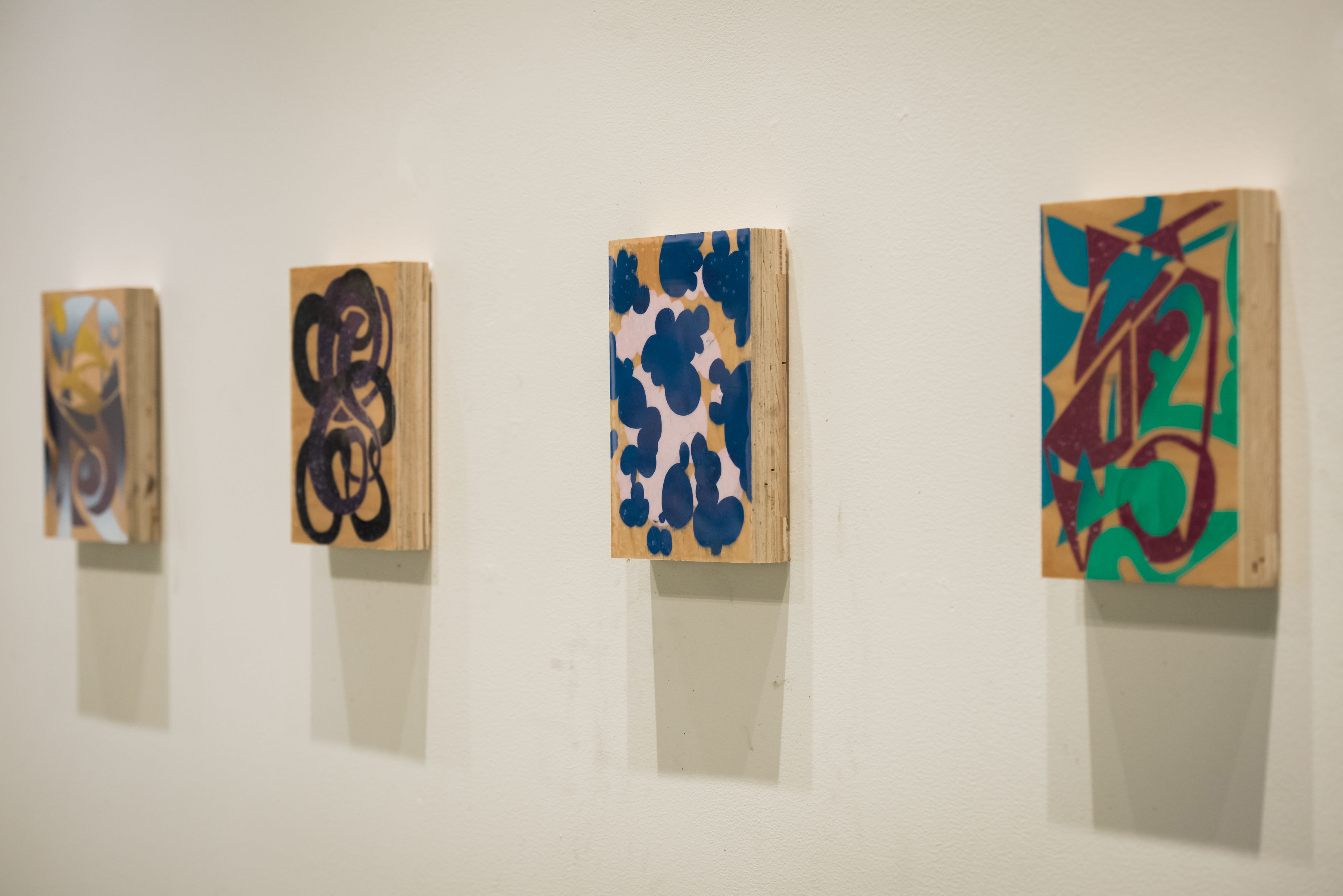
Thomas Scharfenberg’s piece takes up the entire floor of the Dairy Arts Center’s largest gallery. He uses mixed-surface painting, color-coating and patterning similar to lines sometimes painted on hospital floors, directing patients and visitors to the right areas. The patterns and colors Scharfenberg use in his artwork represents existing energy systems around us — systems that ultimately help us navigate our physical surroundings. It’s as if his installation in Touch unconsciously leads viewers throughout the gallery. Viewers perspectives also shift when they get an aerial view of the painting — revealing the endless possibilities of paths as if it were a labyrinth. His installation can also be taken metaphorically with how humans choose to navigate their lives — some move through it blindly and some are wary about which path to take because they’re afraid of the consequences.
Julie Maren takes advantage of layering and paint to create vibrant collage paintings that you can feel. She utilizes her background as a textile designer to tear up existing patterns and reassemble it to create new ones. She also creates her own collage paper to add more texture and depth to her work. Seeing the colors of her artwork will make you feel happy, but touching it will give it more meaning. Maren’s work also draws influence from gardens in the summertime and the energy of rainstorms. Seasons, gardens and storms are interlinked, and we can never accurately predict how each one will turn out. Maren’s paintings are reminders of how random gardens or storms can be and the textures reflect that, with rough parts and smooth ones juxtaposed.
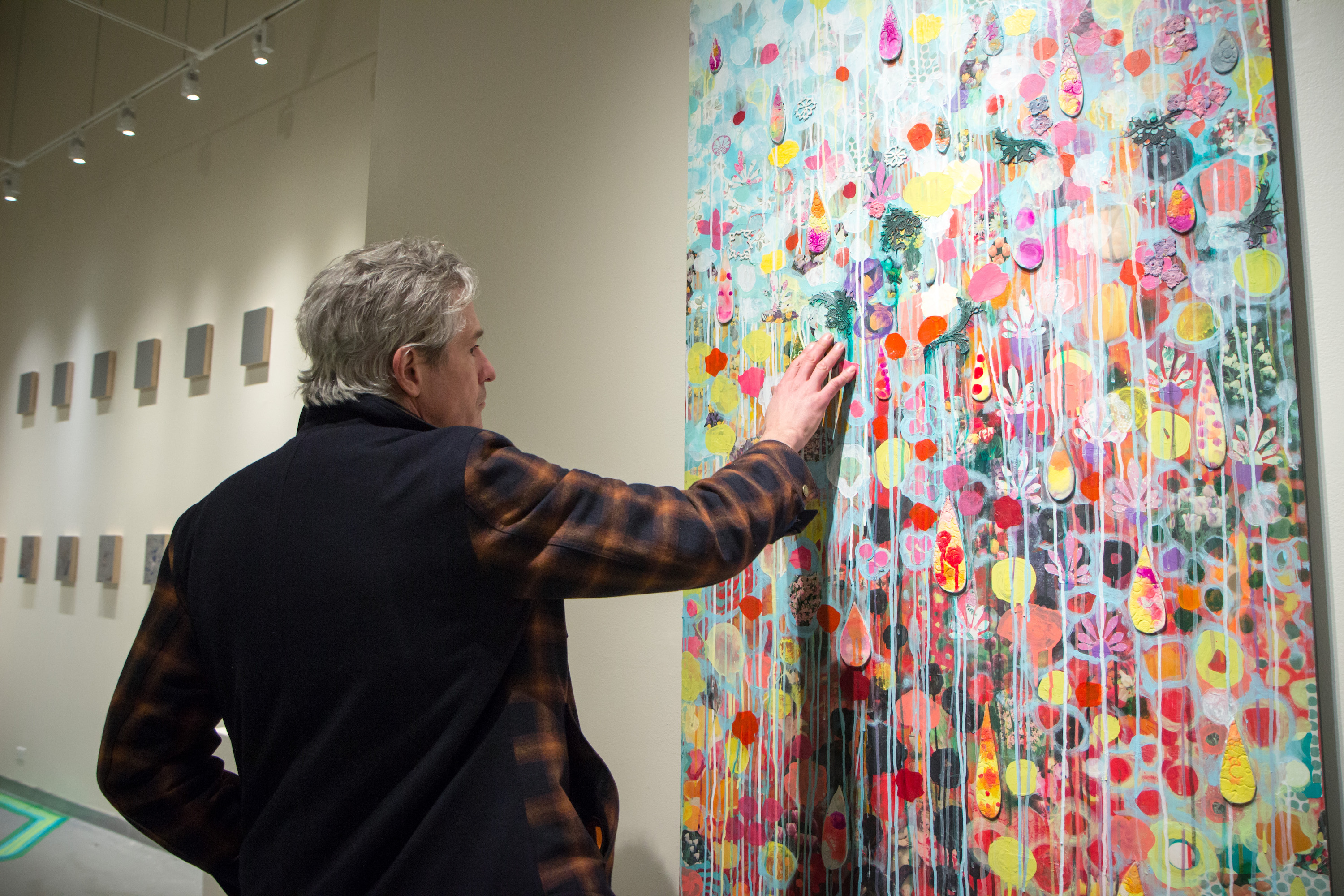
Kenzie Sitterud created an immersive piece called The Wardrobe, and it represents an intimate moment from her childhood when she came to terms with being queer. The room is filled with clothing, eggshells and a neon sign in the shape of an eye. After entering the room, viewers are supposed to put on headphones attached to an old iPhone that plays “Ray of Light” by Madonna just like how she did when she was younger. As you listen to the music, you also have to look at a neon eye — Sitterud was staring at herself in the mirror from her memory — as if it were forcing you to have some sort of awakening within yourself like how Sitterud did. The eggshells on the floor is a metaphor for walking on eggshells, which is what most people to do when they haven’t accepted who they truly are. This piece is highly personal, but it doesn’t mean viewers can’t have their own awakening of some sort — especially when almost all of our senses are taken on a journey.
Much like the fond memory of a favorite song, Sean Patrick Faling focuses on the world of sound and our relationship with it for his inclusion in the show. He utilizes pre-digital era items and design for his artwork — having vintage-like telephones and a Macintosh Classic with tower speakers to play around with at Touch. Faling uses his own curiosity about hardware and the mechanics to guide his creations. Viewers might even hear harmonic sounds amongst the many different frequencies by toggling with the buttons and switches. The installation also included a Macintosh Classic screen with a static background, playing white noise. Especially for those of us who grew up with dial-up internet, this invoked the memory of waiting, wondering if the technology would work or not.
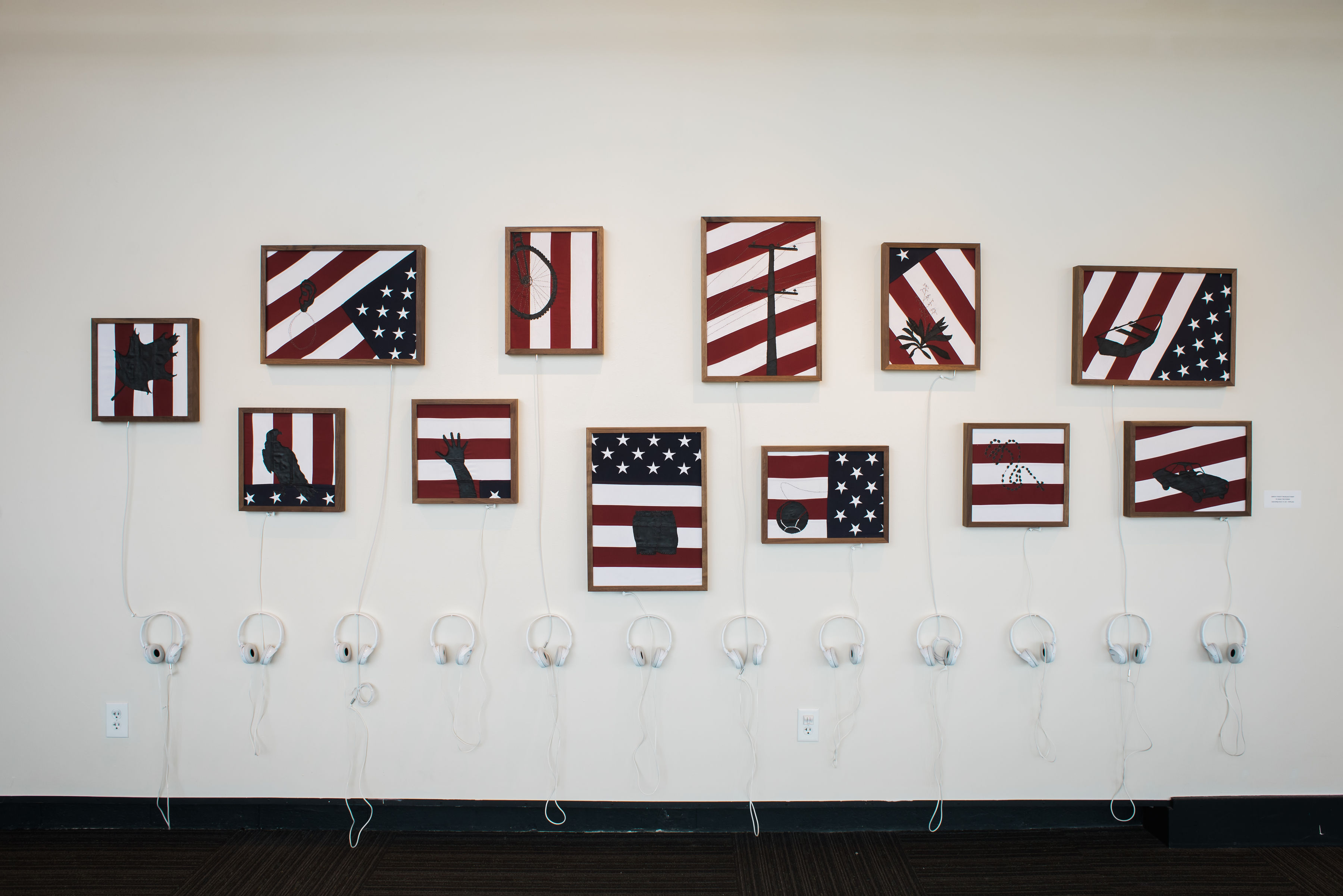
Angie Eng created two installations for the show — Magnetizing Mandala and This is My Land. In This is my Land, Eng collaborated with 12 American poets — all from diverse backgrounds. She cut up the American flag into 12 pieces and framed them, with each piece representing a different narrative. She took symbols from poems written by each poet and used conductive paint and thread to put them onto the pieces of the flag, and the best part is viewers must touch the flag to begin hearing the poem. Viewers might question if this piece is unpatriotic or not, but it certainly drives to deeper meanings than that. We are one nation of diverse people that have extremely different stories to tell — we should listen to each other’s stories and understand one another to mitigate divisions and inequalities between us.
Touch embraces the art of rule-breaking by letting go of the stigma attached to how we should experience and appreciate art. Walking into an art gallery and finding encouragement to be physical with the pieces on display is a little mind-bending. We must rely on the revolutionary and sometimes disadvantageous principles of artists to push the boundaries of what is accepted, allowed or appreciated. People can look at the art on display with their eyes but must feel it with their hands to interact and truly experience it in full — and that is a revolution in and of itself.
—
Touch is on exhibit until March 3 at the Dairy Arts Center, which is located at 2590 Walnut Street, Boulder. Entry is free but a five dollar donation is recommended.
The Dairy Arts Center is open Monday through Friday from 10 a.m. to 6 p.m., Saturday from 12:30 p.m. to 7 p.m. and Sunday from 12:30 p.m. to 5:30 p.m.




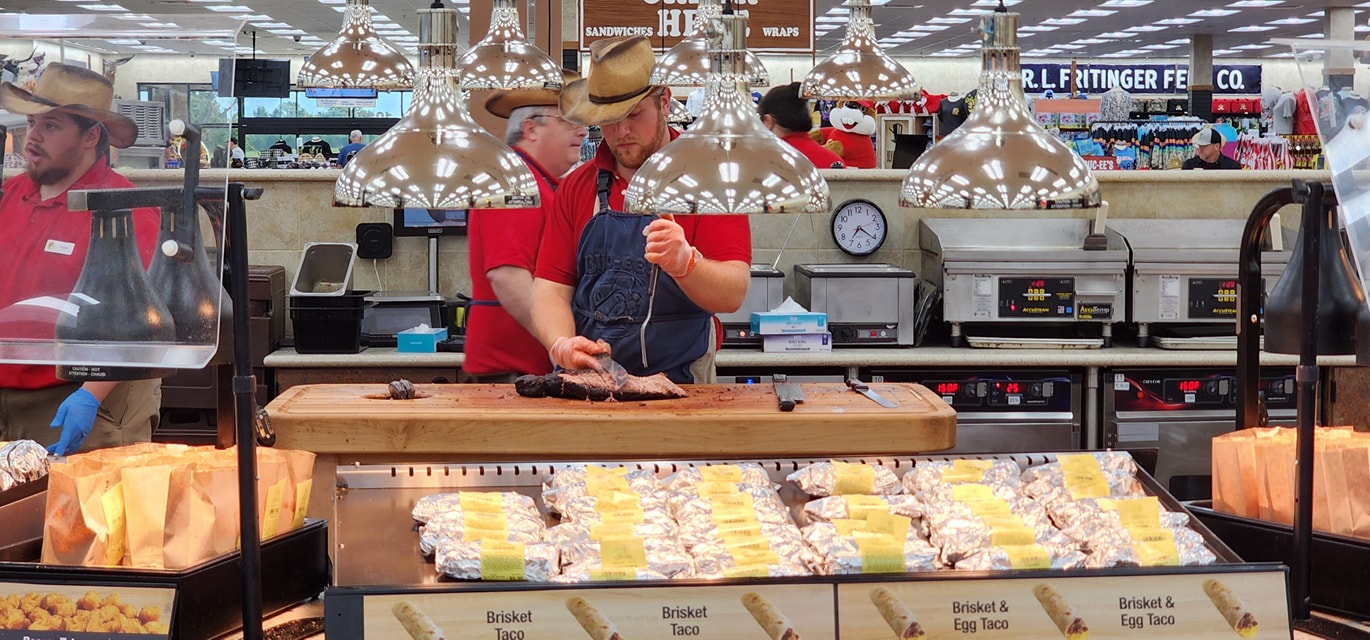
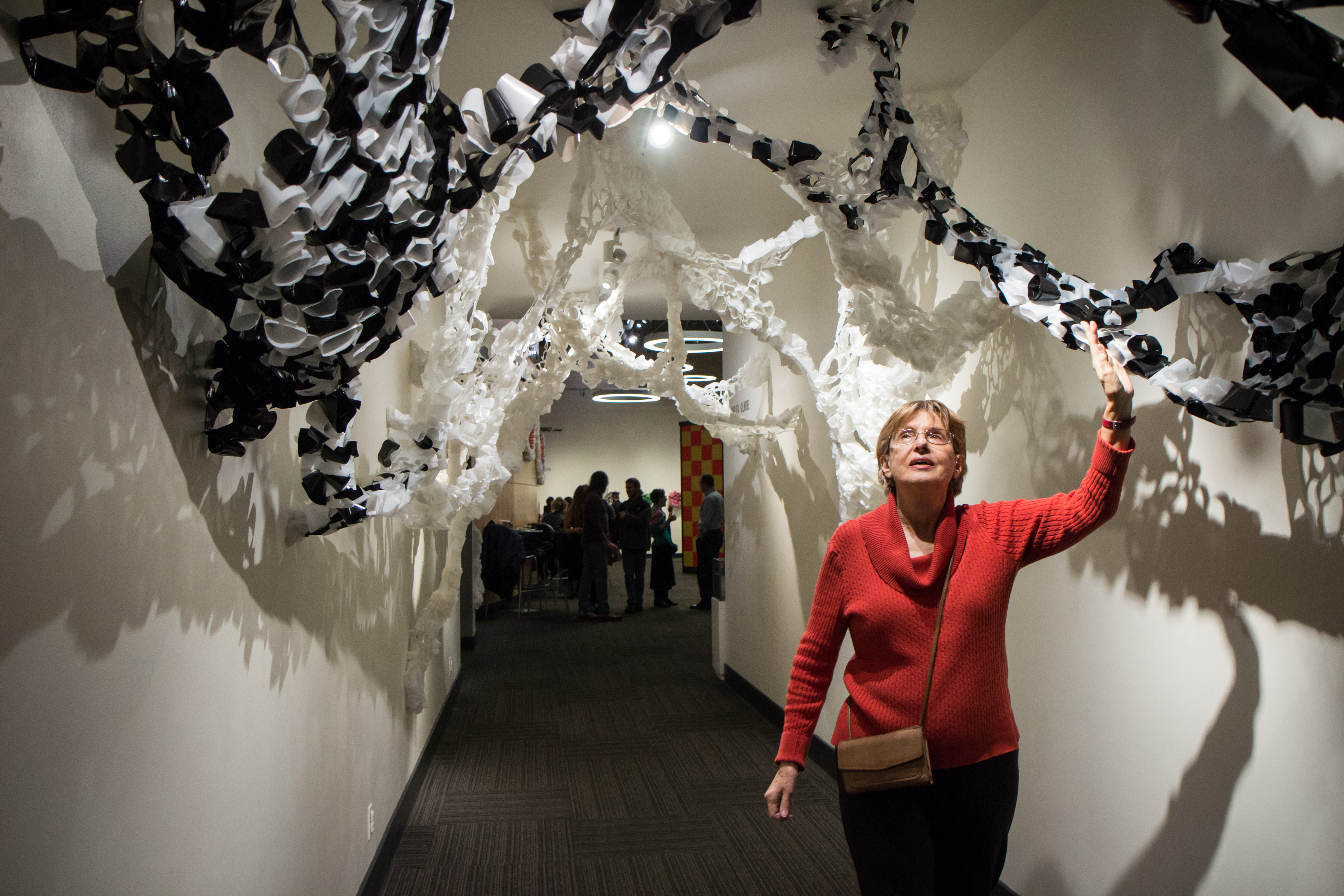
Norovirus exhibit.